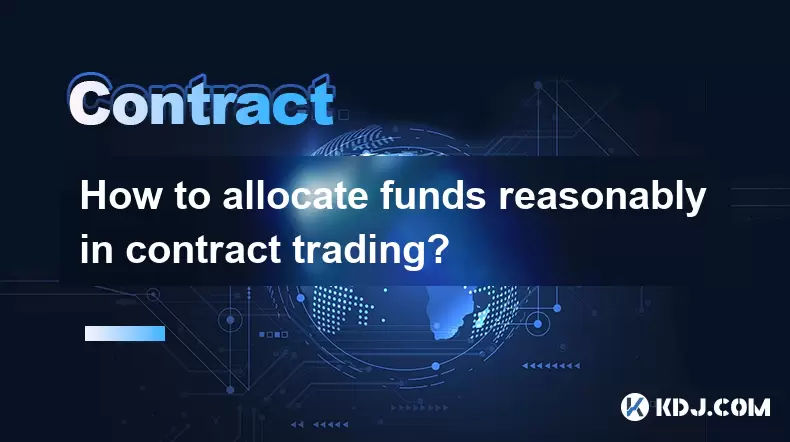-
 Bitcoin
Bitcoin $105,278.9859
4.61% -
 Ethereum
Ethereum $2,414.7741
8.20% -
 Tether USDt
Tether USDt $1.0007
0.05% -
 XRP
XRP $2.1600
7.53% -
 BNB
BNB $639.5433
3.75% -
 Solana
Solana $144.3830
9.37% -
 USDC
USDC $1.0001
0.02% -
 TRON
TRON $0.2742
3.84% -
 Dogecoin
Dogecoin $0.1640
8.57% -
 Cardano
Cardano $0.5811
7.49% -
 Hyperliquid
Hyperliquid $37.2466
5.28% -
 Sui
Sui $2.8243
14.84% -
 Bitcoin Cash
Bitcoin Cash $460.8816
2.22% -
 Chainlink
Chainlink $12.9580
11.75% -
 UNUS SED LEO
UNUS SED LEO $9.1359
1.23% -
 Avalanche
Avalanche $18.2302
10.30% -
 Stellar
Stellar $0.2463
7.80% -
 Toncoin
Toncoin $2.9151
7.18% -
 Shiba Inu
Shiba Inu $0.0...01163
9.79% -
 Hedera
Hedera $0.1532
14.01% -
 Litecoin
Litecoin $85.3310
6.29% -
 Monero
Monero $308.8215
2.90% -
 Ethena USDe
Ethena USDe $1.0007
0.03% -
 Polkadot
Polkadot $3.4259
9.42% -
 Dai
Dai $1.0002
0.01% -
 Bitget Token
Bitget Token $4.1742
3.19% -
 Uniswap
Uniswap $6.8272
8.53% -
 Pepe
Pepe $0.0...09939
12.29% -
 Pi
Pi $0.5358
6.03% -
 Aave
Aave $257.3092
12.83%
How to allocate funds reasonably in contract trading?
Before trading crypto futures, assess your risk tolerance to determine how much capital you can safely risk per trade and avoid overexposure in volatile markets.
Jun 24, 2025 at 01:14 am

Understanding Risk Tolerance Before Fund Allocation
Before engaging in contract trading, it is crucial to assess your risk tolerance. This determines how much capital you are willing to risk on each trade without jeopardizing your overall financial stability. In cryptocurrency futures markets, prices can be highly volatile, and losses can accumulate quickly if proper risk management is not applied.
To determine your risk tolerance, consider the following:
- What percentage of your total capital are you comfortable losing in a single trade?
- Do you have a diversified investment portfolio outside of crypto?
- How frequently do you plan to trade?
By answering these questions honestly, you can set realistic expectations and avoid overexposure.
Position Sizing and Leverage Management
One of the most important aspects of fund allocation in contract trading is position sizing. Unlike spot trading, where the maximum loss is limited to your invested capital, leveraged futures contracts can lead to losses exceeding your initial deposit. Therefore, managing position size effectively is essential for long-term survival in this market.
Here’s how to calculate your ideal position size:
- Determine your maximum risk per trade (e.g., 1% of your total capital).
- Identify the distance between your entry price and stop-loss level.
- Calculate the value of that distance in terms of dollars or crypto.
- Divide your risk amount by that dollar/cryptocurrency value to get the appropriate position size.
In addition to position sizing, leverage should also be carefully controlled. While higher leverage increases potential gains, it also magnifies losses. Most experienced traders recommend using low to moderate leverage, such as 2x to 5x, especially when starting out.
Diversification Across Contracts and Assets
Diversifying your trades across multiple contracts and assets is another key strategy in fund allocation. Putting all your capital into one trade or a single cryptocurrency contract significantly increases exposure to market volatility and unexpected events.
To implement diversification:
- Spread your capital across different crypto futures contracts (e.g., BTC, ETH, SOL).
- Consider varying timeframes — short-term, medium-term, and long-term contracts.
- Avoid concentrating more than a small percentage (e.g., 2–5%) of your portfolio on any single contract.
This approach helps reduce the impact of adverse price movements in any one asset or contract type.
Using Stop-Loss and Take-Profit Levels Strategically
Effective use of stop-loss and take-profit levels plays a vital role in fund allocation. These tools help automate exit points based on predefined conditions, reducing emotional decision-making during fast-moving markets.
To set up effective stop-loss orders:
- Place them at logical support/resistance levels based on technical analysis.
- Ensure they are far enough from the entry price to avoid being triggered prematurely by market noise.
- Adjust them dynamically as the price moves in your favor.
For take-profit levels, consider:
- Setting them near historical resistance areas or Fibonacci extensions.
- Using trailing stops to lock in profits while allowing room for further upside.
By combining these tools with proper fund allocation, you can better manage both risk and reward in contract trading.
Monitoring and Rebalancing Your Portfolio Regularly
Even with a well-thought-out allocation plan, market conditions change constantly. That’s why it’s essential to monitor and rebalance your portfolio regularly. Over time, some positions may grow disproportionately compared to others, increasing your exposure to certain assets or contracts.
To maintain balanced exposure:
- Review your portfolio weekly or monthly, depending on your trading frequency.
- Assess whether any position has grown beyond your initial allocation limits.
- Adjust positions by either taking profits or reallocating funds to underperforming but promising contracts.
Regular portfolio reviews ensure that your fund allocation remains aligned with your trading goals and risk profile.
Frequently Asked Questions
Q: Should I allocate more funds to high-volatility contracts?
A: High-volatility contracts can offer larger returns but come with increased risk. It's generally advisable to limit exposure to such contracts unless you have a strong understanding of their behavior and a robust risk management plan in place.
Q: Is it safe to use auto-trading bots with allocated funds?
A: Auto-trading bots can execute trades faster than humans, but they still require careful setup. Always backtest strategies before deploying real funds and ensure stop-loss mechanisms are active to prevent excessive drawdowns.
Q: Can I adjust my fund allocation mid-trade?
A: Yes, but adjustments should be made cautiously. Changing allocations during an open trade may disrupt your original risk-reward calculation. Only make changes if there’s a significant shift in market conditions or your personal risk appetite.
Q: How often should I reassess my risk tolerance?
A: It’s wise to reassess your risk tolerance every few months or after major life events (e.g., income changes, new investments). Market experience can also influence how much risk you're willing to accept over time.
Disclaimer:info@kdj.com
The information provided is not trading advice. kdj.com does not assume any responsibility for any investments made based on the information provided in this article. Cryptocurrencies are highly volatile and it is highly recommended that you invest with caution after thorough research!
If you believe that the content used on this website infringes your copyright, please contact us immediately (info@kdj.com) and we will delete it promptly.
- Anthony Pompliano's ProCap: A Bitcoin Treasury SPAC Deal Redefining Finance
- 2025-06-24 12:25:13
- PEPE Coin vs. Ozak AI: Making a Long-Term Bet in the Meme Coin Frenzy
- 2025-06-24 12:25:13
- Ripple (XRP): Breakout Potential or Bust? Decoding the Latest Buzz
- 2025-06-24 12:45:13
- XRP, Ripple, Valuation: Decoding the Future Price
- 2025-06-24 12:45:13
- Midnight Airdrop: Claim Your Free NIGHT Tokens!
- 2025-06-24 13:25:13
- Midnight Airdrop: Grab Your Free NIGHT Tokens, Ya'll!
- 2025-06-24 13:07:11
Related knowledge

How to use the price slope to filter the false breakthrough signal of the contract?
Jun 20,2025 at 06:56pm
Understanding the Concept of Price Slope in Contract TradingIn contract trading, especially within cryptocurrency derivatives markets, price slope refers to the rate at which the price changes over a specific time period. It helps traders assess the strength and sustainability of a trend. A steep slope may indicate strong momentum, while a shallow slope...

How to determine the expected volatility of the contract through the volatility cone?
Jun 19,2025 at 12:28pm
Understanding the Basics of Volatility in Cryptocurrency ContractsIn the realm of cryptocurrency trading, volatility is a key metric that traders use to assess potential risk and reward. When dealing with futures contracts, understanding how volatile an asset might become over time is crucial for position sizing, risk management, and strategy developmen...

How to formulate a contract intraday trading plan in combination with the pivot point system?
Jun 21,2025 at 03:42pm
Understanding the Basics of Pivot Points in Cryptocurrency TradingPivot points are technical analysis tools used by traders to identify potential support and resistance levels. These levels are calculated using the previous day's high, low, and closing prices. In the context of cryptocurrency trading, where markets operate 24/7, pivot points help trader...

How to adjust the contract position ratio through the price fluctuation entropy?
Jun 22,2025 at 11:42am
Understanding Price Fluctuation Entropy in Cryptocurrency ContractsIn the world of cryptocurrency futures trading, price fluctuation entropy is a relatively new concept used to measure market volatility and uncertainty. It derives from information theory, where entropy refers to the degree of randomness or unpredictability in a system. In crypto contrac...

How to use the volume swing indicator to predict the contract volume-price divergence?
Jun 18,2025 at 11:42pm
Understanding the Volume Swing IndicatorThe volume swing indicator is a technical analysis tool used primarily in cryptocurrency trading to evaluate changes in volume over time. Unlike price-based indicators, this metric focuses solely on trading volume, which can provide early signals about potential market reversals or continuations. The key idea behi...

How to use the Gaussian channel to set the contract trend tracking stop loss?
Jun 18,2025 at 09:21pm
Understanding the Gaussian Channel in Cryptocurrency TradingThe Gaussian channel is a technical indicator used primarily in financial markets, including cryptocurrency trading, to identify trends and potential reversal points. It is based on statistical principles derived from the normal distribution, commonly known as the Gaussian distribution or bell ...

How to use the price slope to filter the false breakthrough signal of the contract?
Jun 20,2025 at 06:56pm
Understanding the Concept of Price Slope in Contract TradingIn contract trading, especially within cryptocurrency derivatives markets, price slope refers to the rate at which the price changes over a specific time period. It helps traders assess the strength and sustainability of a trend. A steep slope may indicate strong momentum, while a shallow slope...

How to determine the expected volatility of the contract through the volatility cone?
Jun 19,2025 at 12:28pm
Understanding the Basics of Volatility in Cryptocurrency ContractsIn the realm of cryptocurrency trading, volatility is a key metric that traders use to assess potential risk and reward. When dealing with futures contracts, understanding how volatile an asset might become over time is crucial for position sizing, risk management, and strategy developmen...

How to formulate a contract intraday trading plan in combination with the pivot point system?
Jun 21,2025 at 03:42pm
Understanding the Basics of Pivot Points in Cryptocurrency TradingPivot points are technical analysis tools used by traders to identify potential support and resistance levels. These levels are calculated using the previous day's high, low, and closing prices. In the context of cryptocurrency trading, where markets operate 24/7, pivot points help trader...

How to adjust the contract position ratio through the price fluctuation entropy?
Jun 22,2025 at 11:42am
Understanding Price Fluctuation Entropy in Cryptocurrency ContractsIn the world of cryptocurrency futures trading, price fluctuation entropy is a relatively new concept used to measure market volatility and uncertainty. It derives from information theory, where entropy refers to the degree of randomness or unpredictability in a system. In crypto contrac...

How to use the volume swing indicator to predict the contract volume-price divergence?
Jun 18,2025 at 11:42pm
Understanding the Volume Swing IndicatorThe volume swing indicator is a technical analysis tool used primarily in cryptocurrency trading to evaluate changes in volume over time. Unlike price-based indicators, this metric focuses solely on trading volume, which can provide early signals about potential market reversals or continuations. The key idea behi...

How to use the Gaussian channel to set the contract trend tracking stop loss?
Jun 18,2025 at 09:21pm
Understanding the Gaussian Channel in Cryptocurrency TradingThe Gaussian channel is a technical indicator used primarily in financial markets, including cryptocurrency trading, to identify trends and potential reversal points. It is based on statistical principles derived from the normal distribution, commonly known as the Gaussian distribution or bell ...
See all articles
























































































